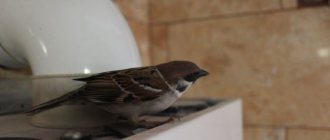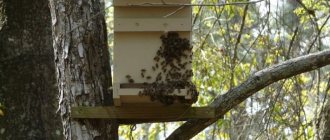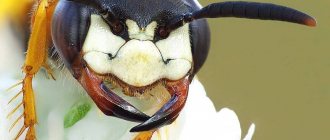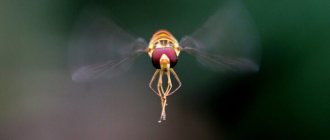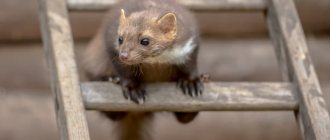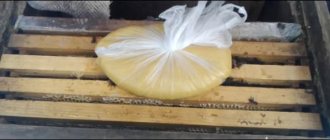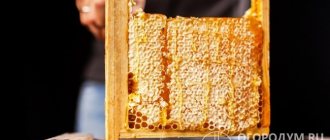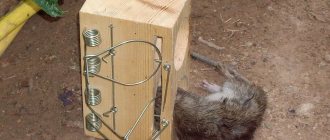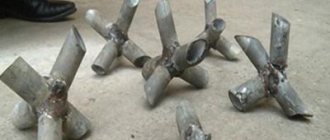Beginning beekeepers are interested in capturing wild bees in order to develop an apiary: these insects are assigned the role of creators of the first families. Although layering, queens and bee colonies are freely available at any specialized farms, it is much more profitable to catch free, stray swarms. Experienced beekeepers have their own motivation in this matter: when swarming begins, the workers go to look for a new home. If they are not stopped in time, the fugitives will take root far beyond the borders of their native apiary, which is rarely included in the plans of beekeepers, who have invested a lot of work and effort in its organization.
The “apartments” prepared by the hunters - empty hives and traps - will certainly interest free workers flying in search of a home, and will solve the problem of catching their own young animals. In this article, we will look at how to lure bees into an empty hive, and the strategy for catching them using specially made devices - traps.
The value of a wild swarm
The natural, natural division of a bee colony contains a set of deep physiological and behavioral factors. The life potential of biologically young individuals forming the basis of the swarm is realized where the new nest will be. The swarm takes with it approximately half the inhabitants of the parent hive and includes an active queen and young individuals with a substantial supply of honey. Representatives of wild swarms increase the productivity of the apiary because they are efficient workers, distinguished by:
- high performance;
- frost resistance;
- strong immunity.
How to lure bees into an empty hive is a pressing question for those who plan to economically replenish their own apiary. In addition to the obvious benefits, this option involves helping striped workers who can survive the cold and food shortages. Free swarms are of great value; the main advantage of capturing them is the possibility of obtaining a strong bee colony in the near future.
Why catch a swarm
A caught swarm of bees helps to enlarge the apiary. Because swarms are rapidly increasing the number of individuals. In addition, catching new inhabitants of the bee farm is exciting and allows you to increase the number of bribes.
Wild swarms are considered the most valuable. Stray bees are different:
- high performance;
- resistance to many diseases to which domesticated individuals are susceptible;
- not exposed to weather conditions.
Modern beekeepers try to prevent swarming so as not to lose insects. Therefore, ancient methods of catching individuals are almost never used.
By adding a stray bee swarm to an apiary, it is possible to form new strong hives with different genotypes. Catching swarms of bees benefits not only humans, but also the separated bee colony. Since many individuals leaving the apiary do not always find new housing and die by winter. In such cases, catching saves their lives.
How to make a trap correctly
The construction of the trap is quite simple and not labor-intensive. When creating a design, you should take into account the following rules:
- It is necessary to make a box that will serve as a temporary new home for the bees. If you look at a trap from a beekeeping point of view, it is the same hive, only much smaller in size.
- To construct the box, you can use regular plywood or thin boards. You should not think about the aesthetics and appearance of the structure, since it will only be used temporarily. Secondly, an unsightly design will not attract the attention of a thief.
- Despite the fact that the trap looks rough on the outside, the inside should be made in such a way that the bees feel comfortable there. It is necessary to maintain all proportions and avoid gaps through which drafts will form.
- When creating a trap, you need to remember that half of the bee army is separated from the colony, so the box must be spacious. Otherwise, the swarm will fly by.
- The best trap would be a box that can hold five to eight frames. It is in such a room that young bees can settle.
- The parameters of the entrance should correspond to six to seven centimeters in length and one centimeter in height, thus not a single rodent will be able to penetrate into the trap. A board with a protrusion of at least three centimeters must be attached in front of the entrance.
How to make a bee trap correctly
- Externally, the trap can be covered with tree bark or branches with leaves. This way people won't notice it, but it will still attract bees. In order for insects to attack it better, the inner walls need to be coated with wax.
- To ensure that the inside of the box is always dry, you need to take care of the roof. It is constructed in a small overlap and covered with waterproof material.
- To attract a young family, it is best to use frames with already drawn foundation, but without honey, since its aroma can attract the thief and the wasp.
- In most cases, the trap is not insulated, since it is only suitable in the summer.
Interesting! From the above, we can conclude that a trap differs from a full-fledged hive in that it is created from improvised material that is available on the farm.
When you catch a swarm of bees, you need to know what to do next. If the making of the trap was correct, and the swarm settled in it, then the following actions will be as follows:
- The bees need to be helped to adapt to a new place; only after two or even three days do they move to a permanent place.
- The trap is moved only in the evening, when all the bees are in the nest, and the entrance must be closed.
- Another one is hung in the place where the trap was set.
- Before moving insects to a permanent place, first of all, you need to inspect the frames and find the queen.
- The transplant will only be successful if the queen is placed in the hive.
- For the family, you need to set up a few more frames with already drawn drying and with new foundation.
Rules of application
To quickly and safely catch a swarm of bees in your own hive, it is important to adhere to the following recommendations:
- The bee bait box should contain up to three frames in which dark brown honeycombs are placed. Empty space is filled with frames.
- To lure a swarm, you can rub the walls of the box with propolis. Particular attention must be paid to the location of the tap hole. Currant leaves and branches are used as bait for rubbing. Avid beekeepers use a special canvas with propolis to catch a swarm.
- When evening or cooler weather sets in, the bees stop flying, so you can remove the bait. When the taphole is transported, it must be covered with foam rubber. The maximum duration of transportation is 2 hours.
Many beekeepers place baits in orchards. If the garden is large and also contains a lot of honey plants (fruits, linden), then in spring and summer you can replace it when many bees settle. They can be moved to your hive.
Methods
It is necessary to know the principles of behavior of these insects in order to successfully catch bees and acquire a new wild swarm.
Every year there comes a period in their life when they are ready to leave their food base and fly a sufficiently long distance (about 3 km) in order to carry out the swarming process. Thus, to catch them properly, you need to use certain methods:
- The first of these concerns the correct determination of the time when baits, traps and hives can be set. The optimal period for this is the last days in May and the first days of June.
- The second method will tell you how to lure the flown away bees directly into the trap set for them.
- Well, the third one will explain what should be used - an empty hive or a trap specially built according to the drawings, in order to try how best to attract and catch a swarm of bees.
Lures
To enhance the attraction effect, you can use a variety of baits. Moreover, experienced beekeepers know that they can use special herbs that can be found in the garden. But special preparations that can be purchased in specialized stores are still more effective in terms of attracting bee colonies.
Traps
Since structures are often used not only to catch alien or wild swarms, but also to prevent young families from flying away from their own apiary, you need to know how to make it.
Use the following rules to make a trap with your own hands:
- They make a box that serves as a temporary home. Structurally, it resembles a small hive.
- Suitable materials are plywood or thin boards. Aesthetics in this case are not important.
- But the inside should be made so that insects feel comfortable.
- The proportions and dimensions can suit a narrow, tall or standard design. But, it must fit at least 8 frames.
- The dimensions of the entrance are 7 cm long, 1 cm high. An attached board is about 3 cm wide - so the bees will sit comfortably on it.
- To increase the efficiency of catching swarms, you need to decide what to paint with. The shade should be as natural as possible and convey the structure of the bark or leaves. Sometimes they even cover the surface of such a box with real bark.
- Frames are chosen with covered foundation, but not filled with honey. This is done so as not to attract too much attention from the wasps.
- Insulation is not required, since the product is used in the warm season.
Using traps to catch bees
Most often, a wandering swarm can be caught using traps, which are easy to make. Take a wooden box, or a cardboard one, if not, use other materials. Then you need to place up to 8 frames containing foundation into it.
When making a trap, be sure to remember that the stray swarm can be large, so the box must fit it. If there is not enough space, the bee swarm will not fit into the trap and will fly further. Therefore, it is best to use a two-body or three-body device. This can be checked not too often, there will be enough space.
Features and advantages of a mobile and nomadic apiary
It is important to set the trap correctly; to do this, it is hung in the forest in advance before the swarming process begins. The trap must be hung in the forest on tall trees - oaks, aspen, spruce. The ideal place is that it is located near a pond, from which the bees can drink water. The tree should be in a visible place and of good height. There must be a large amount of honey flow for bees near the trees in the forest. The box is hung at an eight-meter height.
Bee trap
In cases where forests are not visible, bees can settle in places where there is a large amount of nectar, near honey plants. Therefore, choose fields where there are lonely trees, bushes should be located close.
Some beekeepers set up traps in gardens to catch stray swarms. To do this, they are installed in courtyards. If the garden is large, it contains a large number of honey plants - lindens, fruits, which can be replaced in the spring-summer period, as many bees settle. If the trap is set correctly, you can catch a large number of bees. Make sure that the insects are not from a neighboring apiary.
When using traps, you must adhere to the following rules:
- You need to place up to three frames in the trap, install dark brown honeycombs there, the empty space needs to be filled with frames that are empty.
- The walls of the traps are rubbed with propolis, especially the place where the entrance is located. You can rub it with currant branches and leaves. It is recommended to use special canvases with propolis.
- Baits should be removed when it is cool, in the evening, after the bees have completely stopped flying. When you transport the taphole, you must cover it with foam rubber. They can endure transportation in them for up to two hours.
When to set traps
You need to know not only where to set bee traps, but also when to set them. This work should be done in May. It is in this month that swarming begins. It lasts until August. Traps should be inspected more often. The faster a swarm can be relocated to an apiary, the higher the likelihood that a new swarm will fall into a trap located in a good location.
If you have free time, it is recommended to set as many traps as possible. As a result, it will be possible to identify the most promising places that will bring an excellent “catch” in subsequent years.
Removing Traps
Traps should be checked periodically (every 7-8 days). If you notice bees during the inspection, you should leave and return before sunset. But don’t immediately remove the trap. First, it is better to put your ear to it and lightly tap on the wall.
If a loud buzzing sound is detected, then you can congratulate yourself on your success - a swarm has flown into the box. If the buzzing is weak or generally quiet inside, then scouts flew to the trap during the day, and the swarm will appear in 1-5 days. But only if the scouts decided that the living conditions were suitable.
If the swarm is trapped, then at dusk you need to climb a tree, close the entrance with a fine mesh using a stapler, and remove the house down (manually or on a rope). For illumination, you will need a flashlight with a red light (the eyes of bees do not perceive it).
Important! If the apiary is located at a distance of less than 5 kilometers from the place of capture, then the trap must be transported 7-8 kilometers in the opposite direction and left there for 7 days. If you immediately take the swarm to the apiary, the insects will return to the place where they were caught.
To attach a swarm to an apiary, it is recommended to install several frames containing brood in the hive.
Instructions for catching a swarm of bees
How to quickly and economically fill your own apiary with new bees? Some beekeepers use the old method of catching swarms. Thus, you can not only increase the number of apiaries, but also help insects by protecting them from cold winter and lack of food simply by catching a swarm of bees. It is not the escaped swarm that is of high value, but the wild one, since it is distinguished by its high resistance to cold, strong immunity and great diligence. Such individuals practically do not get sick, and health is a hereditary factor.
Catching stray swarms helps to breed strong and strong colonies, which is very important for beekeeping. When a beekeeper makes a trap to catch swarms, he must know that this process benefits not only him, but also the bees. Catching swarms plays an important role for insects, as they search for food and shelter for a long time. Many bee swarms die without finding shelter. Catching stray swarms ensures a complete and high-quality population of these insects. Therefore, beekeepers should not be lazy in catching them. It’s better to make a trap, prepare high-quality bait and go in search of a suitable swarm.
Using Effective Traps
To replenish the apiary with new bees and fill the hive, experts recommend using an old, but time-tested method involving catching entire swarms. Most often, wild bees live in hollows or nests.
If you are going to catch a stray or wild bee swarm, you can do this using a homemade trap. It is very easy to assemble. To do this you will need a box made of wood or cardboard. Eight frames with foundation are placed in it. During the manufacturing process, it is important to remember that the swarm can be enormous in size, and the box must correspond to them. If there is not enough free space, the swarm of bees will not be able to fit and will fly away. To avoid such trouble, it is best to use a special device - three-body or two-body. Such a device will have enough space for a large swarm.
Proper placement of your bee swarm trap is crucial. Experts advise placing it in the forest before the swarming process. It is preferable to hang it on a tree. It is better to choose tall trees such as spruce, oak or aspen. The optimal location is near bodies of water, as swarms can drink water from them. The tree should be located in a visible place. It should be surrounded by huge amounts of honey collection. The box can be hung at a height of eight meters.
How to catch an escaped swarm
Monitoring the swarm state of bee colonies is a tedious task; amateur beekeepers sometimes have difficulty solving this problem. The result: the loss of a swarm, which is often lured away by other beekeepers, or rather, by the traps they set and empty evidence. To avoid a decrease in the productivity of the remaining bee colonies, escapees must be returned. How to catch an escaped swarm?
The algorithm of actions is as follows:
- Find out the location of the flying insects. If most of them are placed in a tree or bush, use a swarm, having first sharply shaken the branches.
- If there are no swarms, they use a large container, and the fugitives are sprayed with cold water from a spray bottle - it will be difficult for them to fly away when wet. Then they collect it using improvised means: a ladle or a scoop.
- In both cases, the fledged individuals are placed in a cool place - a basement or cellar for a day, and then transplanted into the hive
Hive: high bottom using German technology
They catch a runaway family with a big ladle
The process of catching the departed swarms is very important, since they must be returned to their place so as not to harm the productivity of the entire family.
Algorithm for catching such swarms:
- it is necessary to track the location of the swarms; if most of them are sitting on the branches, you can use a swarm and instantly shake off the individuals;
- individuals that were not included in the swarm should be carefully collected with a wooden scoop to be sent to all the bees;
- the swarm is hung on a branch so that the remaining insects fly off;
- so that the individuals calm down and cool down, the swarm is sent to the basement or a cool place;
- in the evening they are transplanted into the hive.
Each beekeeper uses different fishing methods. It is worth remembering that new insects can carry the risk of infectious diseases. To prevent mass infection, bees must be treated in a timely manner. After catching a swarm, you may need to make your own foundation.
Why is catching stray swarms useful for both nature and beekeepers?
Catching stray swarms is not only interesting, but also beneficial for nature. After all, many of the swarms that annually fly away from apiaries and fly out of hollows are doomed to death: either there will be no suitable housing, or they will not have time to collect honey in the winter. Consequently, catchers of stray swarms often save their lives, and bee colonies doomed to extinction can still exist for a long time and successfully in the apiary and serve beekeepers well.
It is important to warn novice swarm catchers: while there is still no experience, the exact places where swarms fly into traps every year have not been determined, this business may not be profitable. Traps need to be transported over considerable distances, and transportation costs are significant these days. But over time, this business can become quite profitable. There are known cases where now quite large apiaries were started not by purchased bee colonies, but by captured stray swarms. By the way, you don’t always need to go somewhere to catch a stray swarm. Any person who wants to have his own apiary and has a swarm trap hung on an apple tree in his garden can catch a swarm right on his estate. In places where there are many large apiaries, or a lot of bees live in forest hollows, you can use several traps to catch quite a few swarms during the season. When catching stray swarms on your estate, you can use hives of any design as bee traps. The main thing that should be observed is that the hives must be equipped with a set of frames with wax and drying material, have sufficient volume and be located on stands under trees. Swarms are not very willing to move into trap hives located in open places.
A wandering swarm, until it is caught by a catcher, does not belong to anyone. It’s a different matter if, say, a swarm has taken root on your apple tree or fence, flying out from your neighbor’s apiary, or simply has a “pedigree.” When the owner of the apiary from where the swarm came to you is known, in conscience this beekeeper is its legal owner. By the way, a custom has been known since ancient times: a beekeeper, in whose apiary one of the families released a swarm, and it flew “to the side,” grabbed a basin or bucket and knocked on it. This served as a sign to the residents, both of this village and all the surrounding ones, that the swarm that had flown in from the direction of thunder and ringing had an owner. To appropriate such a swarm was considered theft; it was supposed to be given to the owner. Now the meaning of such a custom has been forgotten, and many beekeepers believe that knocking on a basin or bucket can “besiege” a swarm so that it does not fly away from the apiary. In fact, you can hit the pelvis until complete exhaustion and cramps throughout the body, but the intentions of the flying swarm are unlikely to change noticeably.
Why catch a swarm
If the catch is successful, the swarm will help expand the apiary and bring good profit: swarms are famous for their rapid increase in numbers. In addition, such a “hunt” is quite interesting and exciting.
Particularly valuable are wandering swarms of wild insects. They are characterized by excellent performance, increased resistance to various diseases and adverse weather conditions. As a result, it is possible to form many bee families that differ in genotype.
In modern beekeeping, the ancient method of catching bees has been almost forgotten. Now beekeepers are trying to prevent swarming, as it often leads to the loss of a bee colony.
Catching a swarm will benefit not only the beekeeper, but also the bees. Many insects, having left the apiary, die because they do not find a home or do not have time to stock up on honey for the winter. In such cases, catching the swarm saves the bees' lives.
The best option is to catch swarms with traps, but other methods are also known. Now let's take a closer look at how to catch a swarm of bees.
How to lure bees into an empty hive
On a note! In order to attract new families to your apiary, you need to follow some recommendations from experienced beekeepers on how to drive bees into a hive.
You need to put exactly six frames in an empty hive. Wild bees have their own peculiarity and intelligence. If there are few frames, they will simply fly by. If there are more frames, then they will attract a not very large family.
It will be useful to rub the walls of the hive and the entrances with a mixture of herbs: lemon mint, basil.
Before catching bees, you should take into account that frames with already used foundation attract wild individuals, and new sushi and foundation are of interest to families that have left the apiary.
How to lure bees into an empty hive
The hive, which is placed to attract a swarm, must be constantly viewed, but under no circumstances should it be moved. It may attract the attention of scout bees, and when they move, they simply won’t find it in the future. This way the bee colony will be lost.
Transporting the swarm
When the trap works, the question of transporting insects to the apiary farm will arise. To do this, choose a warm, windless day; such weather guarantees the absence of excessive bee aggression, and therefore reduces the risk of bites. It is necessary to wait until sunset, when the last workers fly into the trap after returning from work. Trying not to make noise, you need to climb the tree, carefully close the entrance, untie the box using an additional rope, and lower the structure down.
Fishing without a trap
Important! In order to catch a swarm in this way, it is necessary to use a dadan, a bed or the lower body of the hive. It is taken about fifty meters from the main apiary, several frames with dry land are installed and left to await the settlement of the swarm. The main advantage of this method is that this structure can be safely used as a beehive, and the family will not have to be relocated.
Experienced apiary owners are on duty during the swarming period in order to catch the swarm flying out of the hive. How to catch bees if a swarm has landed on a branch? To catch it, you will need several simple devices: a swarm (the so-called special net for catching bees), an empty hive, a spray bottle filled with water, a ladder and a pole equipped with a hook.
If a swarm lands on a tree, the beekeeper climbs the stairs to the scion and treats the bees with water. Then he attaches the scythe to the pole, hooks it on a branch and kills the wet insects that are unable to fly. You need to try to shake off as many bees as possible the first time.
If the queen gets into the swarm, then the rest of the insects will fly after her. The swarm is usually left near the tree for a couple of hours. During this time, all the bees will gather in it, after which they can be moved into a new home.
It makes catching a swarm much easier if it forms near the ground. It is enough to spray the bees with water and then collect them with a scoop into a swarm. The following video will help you see how to catch a swarm of bees for a beginner.
conclusions
- Where to place the bursts? It is better to place traps close to the possible flight zone of bees. Usually, bees try to make their route in such a way as to avoid the influence of the wind - along plantings, along the edge of a forest, between individual rare trees, along a ravine, along beams, along a clearing. Traps can be placed on trees so that they are not visible to prying eyes. It is very convenient to place traps where you often pass through; this will allow you to detect a settled swarm in time.
- Equipment of traps. To attract swarms, it is best to place frames with built-up honeycombs in traps, but if such are not available, then frames with foundation will also do. Both frame blanks and foundation can be purchased at a beekeeping store. It’s not that difficult to make several dozen frames on your own. It is enough if there are three or four frames with dry or wax in the trap. It is very desirable to give new traps a smell familiar to bees. To do this, you need to buy or make an alcohol tincture of propolis yourself, and before setting the traps, smear the wall where the entrance is located.
- What are the deadlines for setting and removing traps? Swarming season begins in May and ends in August, so setting traps should begin in May. The more often traps are inspected, the better. The faster the settled swarm is removed and moved to a new place, the greater the likelihood that the successful point will again attract another swarm. Swarms should be removed and transported at the end of the day, when all the bees have stopped flying.
- How many traps should I set? It all depends on the time you can devote to hunting for swarms. You should know that there are places where swarms settle almost every year, and somewhere they never settle. The more traps are set, the faster it will be possible to calculate promising locations for traps, which are likely to be catchable in other years. In general, you need to rely on luck, because during the season you can catch several dozen swarms, or you may not catch a single swarm. The most inconvenient thing about catching swarms is the inability to predict the development of events. After all, the whole process takes time, and what the return will be is unknown. However, with some persistence, over the course of a few years it is quite possible to create an apiary and gain some experience in beekeeping, spending only a small amount of money on it.
Transplanting bees to a permanent place
To transplant captured bees into an empty hive, you must perform the following manipulations:
- choose a suitable day with calm and warm weather; during this period, insects from swarms are non-aggressive, so the risk of being bitten is reduced to zero;
- Using smooth and careful movements, remove the top part of the box located on the tree. It is important to remember that during this time the insects manage to build some structures inside the box, namely wax tongues;
- before removing insects from the swarm, make sure that there is no queen bee on the structures;
- then take out the frames and inspect the loot. If there is no queen on the frame and the amount of seeding is minimal, you need to shake it off and put it aside. The frame containing the queen is sent to the permanent hive;
- Having examined the frame and not finding the queen bee, you need to check the box, since it remains in it. In any situation it must be removed from there. You have two options: shake off the insects into the hive or catch the queen separately to place in a new home;
- after these steps are completed, the required number of frames are sent to the hive, then covered with a pillow and a canopy to place the roof;
- After a few days, experts advise inspecting the home.
How to get bees out of a hollow
It is not difficult to catch insects from wandering swarms, since they are often located in hollows and nests. One of the most common methods is to install a box with bait so that insects from a swarm fly not into hollows and nests, but into the box. What to do if the family does not respond to the bait? The only true and effective method is to find the queen bee. To do this, the following work is performed:
- you need to open the hollow;
- find the uterus in it;
- move it from the hollow to the prepared cage.
Next, the queen bee is transferred to a box located nearby.
Periodization of swarming
The swarm compartment is the tip of the iceberg called swarming. It is based on long-term preparation of the colony, which begins long before the bees separate.
The first stage, and the main sign of the swarm mood in the family, is the intensification of the rearing of drone larvae. A newly hatched family cannot do without pre-bred males. The queen's sowing of drone cells is her way of realizing her desire to reproduce. From the moment drone brood appears in the colony until the appearance of swarm queen cells occupied with eggs, usually no more than 3 weeks pass.
The following changes are observed in the hive: if previously preference was given to preparing the bee cells of the honeycomb, now the bees are working on the drone cells. At the same time, they continue to fly to honey collection and raise brood.
Gradually, the need to care for young larvae disappears, because the queen, preparing for swarming, continuously reduces the rate of oviposition. Many young bees, not busy with work, appear in the nest.
After a couple of weeks, the amount of brood drops to a critical minimum: for each larva there are about 2 nurse bees. Due to an overabundance of royal jelly secreted, insects begin to feed it to each other. As a result, worker bees gain fat mass and acquire the ability to lay eggs (however, they are not able to fertilize eggs, and only drones emerge from them). They lose their working skills, stop flying for honey, caring for the hive and building honeycombs. So, a period of active swarming begins in the family.
Bee baits
On a note! If anyone doesn’t know how to lure bees into a trap, then you should take into account that modern beekeeping uses baits that are created specifically to catch swarms. These preparations contain substances that were selected in accordance with the basic instincts of insects.
The most effective baits include the following drugs.
Making drinking bowls for bees
Apimil
This is an effective bait for bees. The composition of the drug includes:
- Geranil;
- Citral;
- Nerolic acid;
- Geranic acid;
- 9-ODK;
- Stabilizer Phenosan-43;
- Methyl esters of phenylacetic acid;
- Fenilo.
Interesting! This drug was created by mixing all drugs under normal conditions. Moreover, this drug is much more effective than traditional substances used in beekeeping.
Apiroi
This is a bait for bee swarms, an analogue of the above-mentioned drug, it is produced in the form of a gel. It effectively influences a swarm of bees and can completely change their behavior. It is used to attract swarms, having previously treated a trap, swarm or empty hive with it. The only condition is to place the treated trap at a distance of one hundred to eighty meters on the windy side. Then the bee swarms will be trapped.
Sanroy
On a note! The most popular bait that beekeepers have been using for a long time. It consists of strips treated with an aromatic agent, which need to be attached to the front walls of the hive or between the frames. Such hives should be placed in the southern part of the apiary and placed on the windy side so that the bees can feel a pleasant aroma.
Drugs
You can also use modern drugs that will help facilitate the process of catching wild and escaped swarms.
Apimil
Apimil is highly effective. It includes such plant components as geranium and acid produced from it, neroliic acid and additionally synthetically produced components.
Apiroi
It is also an effective product, available in gel form. Affects the behavior of an entire swarm. There is a peculiarity in placing such traps with bait. They are placed at a distance of just under 100 meters on the windward side in relation to the main routes of the swarm.
Uniroy
The main active ingredient of this drug is a mixture of natural plant components and synthetically isolated and mixed insect attractants, the so-called attractants. Apply to swarms to change the behavior of bees in the colony.
Setting bait in the forest
The optimal place to catch insects is the forest. A large forest area guarantees a greater chance of catching bees, where for these purposes you should choose:
- clearings, edges, large clearings;
- single old, well-leafed trees with a diameter of up to 120 cm;
- trees standing on a hill where springs with standing water are located within a radius of 50-100 meters.
Aspen and spruce trees are the most convenient to climb, due to the presence of many branches, which also solves the issue of placing bait.
The bait should be on a tree - this way the scouts will find it faster
How to catch a swarm quickly - choose the right place to set the trap.
Conditions for the correct location of the box:
- north side of the tree;
- taphole orientation – north;
- avoid direct sunlight - a hot trap loses its attractiveness to a swarm;
- the optimal height is 3-5 meters, it is no longer safe for the beekeeper to climb higher;
- Mandatory fixation of the bee house with a rope or sling.
The bait box should be checked every 7-10 days.
Where to set the trap
Swarm traps should be hung with a rope in the forest. For this it is best to choose:
- A sunny clearing, the edge of a forest or a strip where there was deforestation.
- Old trees that are placed alone.
- A tree that grows on a hill that is located near a pond.
It is easiest to place traps on trees such as aspen or spruce. In this case, they must be placed according to the rules:
- The box is hung on the north side of the tree;
- The entrance is also located on the north side;
- Under no circumstances should the trap be installed in such a way that it is exposed to direct sunlight. Otherwise, it will not attract the bee colony.
- Place the box at a height of at least three and a half meters.
- Be sure to hang it from the rafters or rope.
Important! The trap is checked every week.
Catching a swarm is not difficult, the main thing is to follow all the recommendations and then take care of your pets. After all, in the future they will produce the most delicious and healthy product - honey.
Proper making of insect traps
Prepare the material. The ideal option would be flat, clean boards without odor or with the odor characteristic of this type of wood. Spruce and linden will be a very good basis; their smells do not irritate or disturb bees, but on the contrary, attract them. Take measurements. It is recommended to make the trap 30-40 cm in height, and only 45-60 cm in length. If the trap is a box type, you will get a rectangle, if the nest (can be made up to 80 cm high) - a cylinder of the correct shape. This size is optimal for both you and the bees - it will be easier for them to initially settle into the trap, and it will be easier for you to deliver it to the trap site and back to the apiary. Build a trap from boards. It does not have to be an ideal shape or texture; the only essential requirement is the absence of cracks and crevices. If one bee can get through there, then all the others will get through, and thus you won’t get them to the apiary.
The result is a slightly crude but reliable design. Treat the inside of the trap with a special gel (there is a large selection), strengthening it from the inside and finishing the finishing there. Pay attention to the entrance - it should be wide for several dozen bees at once; these insects do not like to climb into unknown narrow passages. You can make a simple shutter using a metal fastener or supply the damper in advance. The last step is placing the bait
Place honeycombs inside (clean, healthy dry food) - you can take old ones, but if you are not sure of the result or are catching a swarm for the first time, put fresh ones - a strong smell will increase the chances.
How to find the right place
Where should traps be installed? There are several options.
In the forest
The most common place when catching a wild swarm is a tree growing in a forest or forest plantation. The box for catching the swarm is placed at a height of 5-7 meters so that predators cannot reach it. If it is not possible to raise the trap high enough, then you can place it at a height of 3-4 meters.
You need to choose a strong and tall tree (preferably well branched) so that it is noticeable and does not sway too much in the wind. The best choice would be pine or oak, especially if they grow near a clearing with honey plants or a clearing. If possible, it is advisable to hang the trap on a tall tree growing alone on the shore of a reservoir.
Near the field
If there are no forests nearby, then a field is suitable for catching a swarm, because this is where the bees fly for nectar. You should install the hive at the edge of the field or attach the trap to a tree growing nearby.
In the garden
It is not necessary to go to the forest or field for a swarm. You can try to catch bees in your garden during the flowering period of fruit trees. Flowers of plants serve as a source of delicacy for insects - nectar. Therefore, you can attach a trap to them or simply place a beehive with bait in the garden.
If there are no fruit plants in the garden, but there are linden trees, then the bees will also fly into the yard.
General tips for catching bees
To properly catch a swarm, you need to remember a few secrets:
- To place the trap, it is necessary to select quiet areas, away from noisy roads, farms and animal habitats.
- In the forest, you should choose trees growing near the edges, near clearings, on the banks of lakes or streams.
- Traps should be installed so that they are invisible to random passers-by.
- When installing trap boxes, you should take into account the flight routes of bees to the honey collection.
- It is advisable to place traps not far from the apiary (but not on it) or near the habitat of wild bees. Also a good option are flowering gardens or fields with honey plants. There should be a pond nearby (at a distance of 100-200 meters).
- It is recommended to make the walls of the trap light to avoid overheating.
- Some manuals indicate that the entrance should be directed south. In reality, the direction of the tap hole does not really matter.
- It is better to place a swarm trap in advance, since the scouts begin searching for the swarming site half a month before leaving the hive.
- To find out that a swarm has settled in a trap, you need to constantly listen to it.
- If a swarm has flown into a trap, then after sunset you need to cover the entrance and then carefully transfer the insects to the apiary.
- The released trap can be installed back, having previously smeared its front part and the entrance with a decoction of herbs or wax.
- To ensure that insects do not suffer from heat during transportation, it is necessary to ensure the supply of air to them. To do this, lift the lid, tie it and the upper part of the body with gauze. Then, loosening the gauze, the lid is pulled out.
When catching bees, you should mainly rely on luck, since it is impossible to predict the result. You can spend a lot of time and not catch a single swarm. But if luck smiles on you, you will be able to form an apiary without significant costs.
Plant honey plants
The easiest way to please bees is to plant flowers they like next to the fruit and vegetable plants that need pollination. It is advisable to place flower beds with honey plants in sunny, open places. Warming up in the sun, they will fill the garden with their aroma, inviting bees to the table.
Perennial honey plants popular among gardeners include:
From annuals that attract bees, you can plant:
Honey herbs:
- basil,
- catnip,
- mint,
- borage,
- oregano,
- rape,
- rosemary,
- salvia,
- fennel,
- sage.
Shrubs and trees that bees like:
- barberry,
- cowberry,
- elder,
- viburnum,
- buckthorn,
- hazel,
- Linden,
- raspberries,
- sea buckthorn,
- rhododendron yellow,
- Rowan,
- black currant,
- rose hip,
- Apple tree,
- all conifers.
Another good idea is to replace the traditional grass lawn with Moorish, a mixture of wild flowers that will decorate the area all summer and invite buzzing helpers to it.
